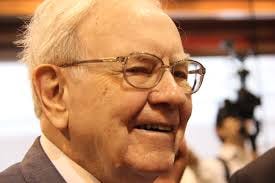How to allocate capital in start-ups
Thoughts on making investments and getting leverage
How to make investment decisions
How should the company, your team, or you think about what you should do, invest in, and work on?
The simple heuristic is to try to work on things that have at least a 100% yearly return.
If you are working at a high-growth start-up, one needs to make roughly a 100%/year rate of return on your blended investments. Warren Buffett needs to make a 20% blended return but Buffett is investing tens of billions of dollars. If you are working at a start-up, you are rarely making decisions that are in the millions of dollars. And lots of things (like a piece of software) cost in the low thousands of dollars and can often have 1000% return.
Each employee at a start-up is a mini Warren Buffett. Each employee is a capital allocator. Each employee is an investor. In fact, the biggest difference between an employee and a contractor is that all employees are capital allocators. That is your job. It is actually your main job.
You can invest your time (which is extremely expensive), your colleagues’ time, and the company treasure. While not all investments need to have a positive return -- your blended investments should have 100% return.
No need to optimize on the very BEST thing to work on.
One thing might have 150% return potential and another might have 200% potential. Of course, while it is better to work on the 200% thing, the 150% thing is REALLY GOOD TOO. So don’t spend time picking between the two. Pick at least one (maybe you can do both). One you figure out something will have a 100% return and feel confident about it, then do it.
Like all things, there are a few caveats.
Even though something has a 100% return profile, it still might not be in the long-term best interest of the company. Or it might have weird competitive dynamics or pull you in odd directions. So just because it has a 100% return profile, does not mean you do it. But definitely do not make the investment if it has less that 100% return.
Before looking for NEW things to do -- the best investments is in things that you are ALREADY doing and ALREADY working. Usually the best strategy is to try to get something that works and then 3x whatever that is. At some point, you will no longer be able to invest in the thing you are already doing. For instance -- if hiring BDRs is working and they are cost effectively adding leads, then you should hire more BDRs. But you usually cannot 10x your BDR team in 6 months though -- so at some point one needs to stop making the investment -- and every time you do an investment cycle you should take stock of where you are at.
Some investments look good until you realize that doing that will force you to stop doing something more productive. If you are already spending you time doing something that is making a great return, might not be a good idea to trade that for something new … at least not until you can automate or delegate the original investment.
Some investments are one-way doors and some are two-way doors. One-way door investments mean you cannot go back -- so you really need to think long and hard about it. For instance -- raising money takes a massive amount (SafeGraph recently raised its Series B) of time. Once you raise money, you cannot just give it back. It is a one-way door. One needs to think carefully about one-way doors. Two-way doors mean you can change our mind. If you run an adwords campaign and spend $30k, you don’t need to keep spending it. That’s a two-way door. You can make two-way door decisions much faster.
Investment horizons and dollars at risk
Some investments pay out very soon (like within a month), and some might take 3 years to see a pay-off. One should try to have a mix of both types of investments. It is really easy to find opportunities to make 100% returns on short-term investments. The problem is that there is usually a maximum you can spend to to get that return. For instance, you might spend 5 hours of your time automating your workflow that will save you 2 hours a week for the next year. That is an amazing investment with an incredibly return profile. But much harder to find an equivalent investment where you spend 500 hours of your time.
Getting approval
For a Series B company (like SafeGraph), if the investment is a small amount (like under $20k), then just do it. No need to get approval. Just make the investment. You will be judged on how it performs but the company should trust your judgment.
If the investment is a mid-amount (like a new hire), then put a bit of rigor around it. For instance, companies do not want to over-hire. But a good hire can usually be moved to a different area of the company if that investment does not work out. So it is OK to make hires as long as you are hiring very sharp people that are versatile and do many things.
If it is a LARGE investment (like acquiring another company or building a totally new product), then you need some extreme rigor around it and really feel confident the investment will pay off. Large bets are also more likely to be one-way doors.



For DaaS companies, how do you prioritize data acquisition, data discovery (platform), and distribution (integrations) investments?